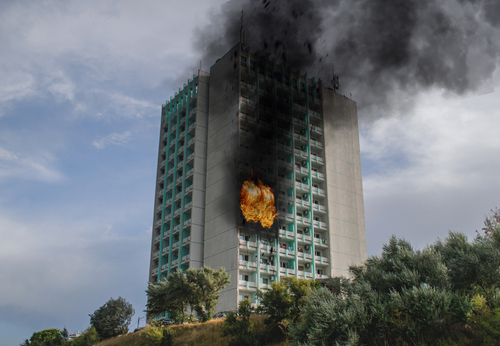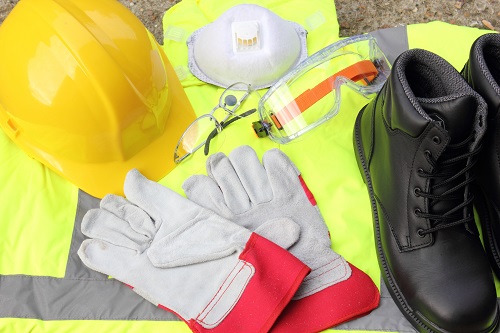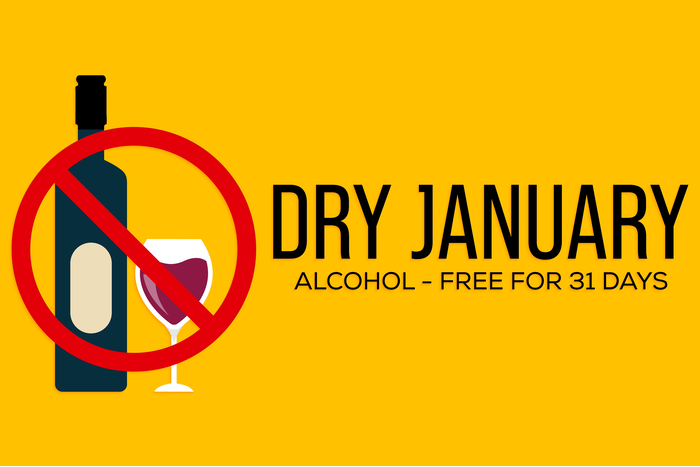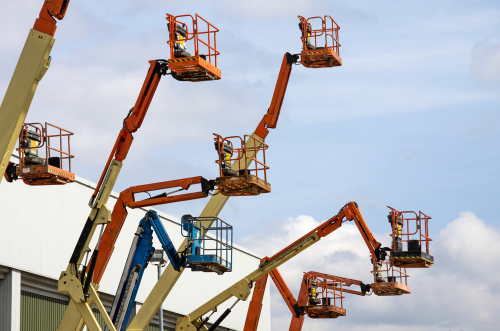Safety Steps: guidance for work at height

Please note: this article was written in January 2020, before the coronavirus crisis.
In 2019, an HSE-supported Construction Industry Advisory Committee Group set up a special industry sub-group, chaired by ECA, to look for the best information and advice to help companies manage this safety risk.
The sub-group produced ‘Safety Steps’, a free to access set of key safety messages for anyone involved in work at height.
Falls from height, whether from step ladders, ladders, MEWPs or other access equipment, are still a significant hazard in our industry, and the consequences can be serious, life-changing or even fatal. The (ECA/Unite) Joint Industry Board’s annual accident figures show that of around 15 RIDDOR-reportable injuries annually, work at height is the largest source of these injuries, with similar but more extensive hazards elsewhere in the industry.
What is Safety Steps?
Firstly, Safety Steps isn’t all about using safety steps! It contains concise key safety messages, information and advice that are generally applicable to a range of work at height. As such, it doesn’t cover the variety of specific work at height activities such as scaffolding or mobile work platforms or working on roofs. The general content does however entirely underpin these, and other, specific activities.
Falls from height are still a significant hazard in our industry
Safety Steps is quite novel in that it’s not really a final product, but rather an ‘enabling’ document (actually a set of six very concise documents). These documents aim to help anyone who wants to produce an output on safe work at height without having to look around for, or create, the essential safety messages. Instead, users – with the basic content to hand – can concentrate on other important matters like how to present the content, what communications channel to use, and who to target with the key messages.
Safety Steps includes five sets of audience-specific information for five key target audiences:
- Designers
- Clients
- Managers
- Supervisors
- Operatives
How do I use Safety Steps?
Safety Steps can be used to create new outputs or to check current ones. So, for example, a safe work at height training course, or other materials such as toolbox talks for operatives, can be checked against Safety Steps. If the current material doesn’t contain the audience-specific messages in Safety Steps, it’s worth considering whether the material should be updated.
In terms of new outputs, the content of Safety Steps can be used to help create, for example:
- New training courses
- Rules and guidance
- CPD materials and toolbox talks
- Flow charts and infographics
- Poster and sticker campaigns
- Information and advisory cards and leaflets
- Social media campaigns
Safety Steps doesn’t rely on slick presentation, it’s all in the content. Some may find it difficult at first to adjust to its ‘enabling’ approach: for an example, during last year’s open consultation, a well-known safety body commented that ‘the information is very good, but wouldn’t it be better as an infographic?’ The point, of course, is that anyone is free to create an infographic, or indeed anything else (see above) from the essential information provided.
How successful is Safety Steps?
Since its launch in November 2019 at the AIF National Conference in Manchester, Safety Steps has been well received by the construction and maintenance fraternity. The six documents are professionally web-hosted by the Access Industry Forum (AIF), to maximise industry exposure, and as of February 2020, there have been over 5,000 free downloads by a host of different users, including clients, buyers and company directors. With this level of interest, the ‘enabling’ approach looks potentially useful for other mainstream safety hazards, such as slips, trips and falls, and manual handling.
Finally, comments on Safety Steps are welcome, and the CONIAC sub-group, chaired by ECA, is ready to deal with any industry suggestions for improvements or alterations. The CONIAC review process will help to keep Safety Steps current, and we advocate its widespread use as a ‘source of trusted information and advice’ throughout industry.
Safety Steps is entirely free to access, and can be downloaded at:
https://accessindustryforum.org.uk/safety-steps/
Sarah Jardine, Acting Head of Construction Division, HSE, said, “I am grateful to the CONIAC Managing Risk Well Group and in particular the Work at Height sub-group, for developing Safety Steps. This is an excellent example of the construction industry and HSE working together.”
.jpg?width=970&height=90&ext=.jpg)



























